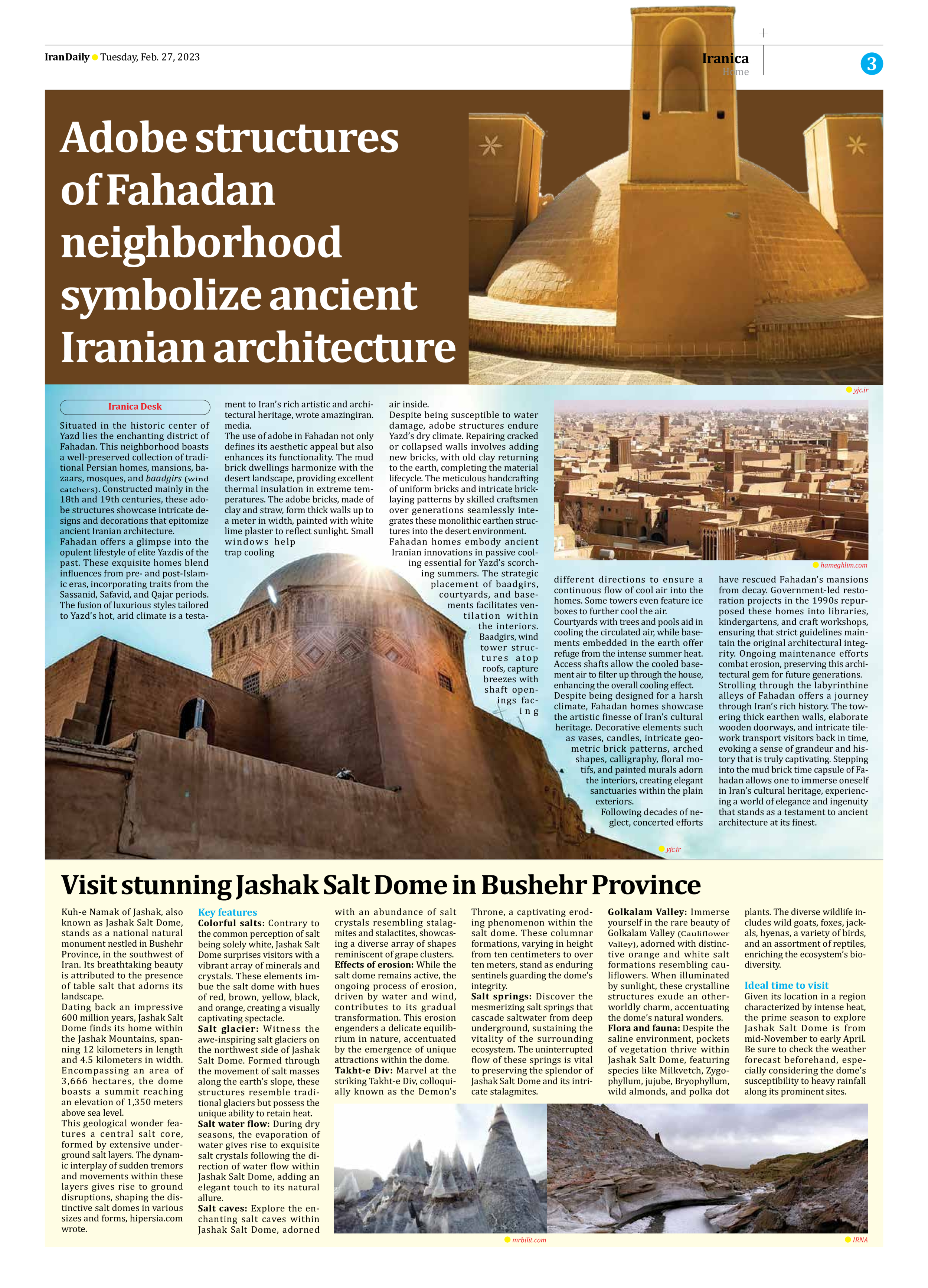
Visit stunning Jashak Salt Dome in Bushehr Province
Kuh-e Namak of Jashak, also known as Jashak Salt Dome, stands as a national natural monument nestled in Bushehr Province, in the southwest of Iran. Its breathtaking beauty is attributed to the presence of table salt that adorns its landscape.
Dating back an impressive 600 million years, Jashak Salt Dome finds its home within the Jashak Mountains, spanning 12 kilometers in length and 4.5 kilometers in width. Encompassing an area of 3,666 hectares, the dome boasts a summit reaching an elevation of 1,350 meters above sea level.
This geological wonder features a central salt core, formed by extensive underground salt layers. The dynamic interplay of sudden tremors and movements within these layers gives rise to ground disruptions, shaping the distinctive salt domes in various sizes and forms, hipersia.com wrote.
Key features
Colorful salts: Contrary to the common perception of salt being solely white, Jashak Salt Dome surprises visitors with a vibrant array of minerals and crystals. These elements imbue the salt dome with hues of red, brown, yellow, black, and orange, creating a visually captivating spectacle.
Salt glacier: Witness the awe-inspiring salt glaciers on the northwest side of Jashak Salt Dome. Formed through the movement of salt masses along the earth’s slope, these structures resemble traditional glaciers but possess the unique ability to retain heat.
Salt water flow: During dry seasons, the evaporation of water gives rise to exquisite salt crystals following the direction of water flow within Jashak Salt Dome, adding an elegant touch to its natural allure.
Salt caves: Explore the enchanting salt caves within Jashak Salt Dome, adorned with an abundance of salt crystals resembling stalagmites and stalactites, showcasing a diverse array of shapes reminiscent of grape clusters.
Effects of erosion: While the salt dome remains active, the ongoing process of erosion, driven by water and wind, contributes to its gradual transformation. This erosion engenders a delicate equilibrium in nature, accentuated by the emergence of unique attractions within the dome.
Takht-e Div: Marvel at the striking Takht-e Div, colloquially known as the Demon’s Throne, a captivating eroding phenomenon within the salt dome. These columnar formations, varying in height from ten centimeters to over ten meters, stand as enduring sentinels guarding the dome’s integrity.
Salt springs: Discover the mesmerizing salt springs that cascade saltwater from deep underground, sustaining the vitality of the surrounding ecosystem. The uninterrupted flow of these springs is vital to preserving the splendor of Jashak Salt Dome and its intricate stalagmites.
Golkalam Valley: Immerse yourself in the rare beauty of Golkalam Valley (Cauliflower Valley), adorned with distinctive orange and white salt formations resembling cauliflowers. When illuminated by sunlight, these crystalline structures exude an otherworldly charm, accentuating the dome’s natural wonders.
Flora and fauna: Despite the saline environment, pockets of vegetation thrive within Jashak Salt Dome, featuring species like Milkvetch, Zygophyllum, jujube, Bryophyllum, wild almonds, and polka dot plants. The diverse wildlife includes wild goats, foxes, jackals, hyenas, a variety of birds, and an assortment of reptiles, enriching the ecosystem’s biodiversity.
Ideal time to visit
Given its location in a region characterized by intense heat, the prime season to explore Jashak Salt Dome is from mid-November to early April. Be sure to check the weather forecast beforehand, especially considering the dome’s susceptibility to heavy rainfall along its prominent sites.







